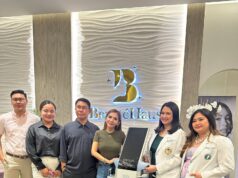MAGALANGAN, a Sumatran village, and Magelang, the name of a region, a district and a capital of a residency in Java ( Woordenboek, vol. 1: 405-6) easily remind one of the town of Magalang in Pampanga. Pora, the name of some islands in Sumatra (ibid.: vol. 2: 824-5) brings to mind the town Porac. Mindjalin the northeasternmost island of the Anambas group in Sumatra (ibid.: vol. 1: 489) reminds one of Minalin, another town here. The name of a fourth town and of a mountain in Pampanga – Arayat- is akin to the Javan word rayat, meaning “peasant.” (Note: Java: rayat. Sunda: rahayat. Malayu: ra-ayat or ra-iat). (Raffles: Ibid., vol. 2, appendix, p. xix).
Sampang, a word which, in the Philippines, has been traditionally considered as a specifically Pampangan surname, is also the name of a district in Madura (near Java) and of four villages in Java, as well as one of the Bato Islands nearby. [Note: Other entries here are: Sampang Koeli (a village), Sampang Lameh (a hill), Sampang Pendeui (a village) and Sampang Tiga (a forest), all in Java; and Sampang Toewan, a gold mine in Sumatra. Woordenboek, vol. 2: 232).
Another Pampangan surname (Lacsamana or Laxamana) is easily associated with the Indonesian Laksamana, the term used to refer to one of the four components of “the grand council of the nation” of ancient Sumatra. (Note: The others were the king or sultan, the maharajah, the padukatuan, and the bandhara. (Marsden, ibid.: 402). In Pampanga, amana means “to inherit” and laksa means “a huge amount.”
Marsden reports of the existence of a wild cat in Sumatra: the musang (Viverra tangalunga). (Marsden, ibid, plate IXa.) (Note: That this cat existed in Sumatra as late as the 1930’s is mentioned inpassing by Taylor (1934: 357). Whether this animal presently exists or formerly existed in Pampanga has not yet been verifi ed by this writer. (Note: The musang is reported to have been found, at least between 1832 and 1910, in the Philippines, specifically in Mindanao, Lubang, Palawan, Panay, Siquijor, the Calamianes and Luzon, more specifically, near Mariveles, Bataan.” (Ibid.: 358).
But the word, certainly, is part of Pampangan vocabulary. As late as the 1940’s, old people in this province would call the attention of a child whose face was the dirty by saying: “Lupa kang musang” (You look like a musang). At present, the more often used is the adjective mamusing (dirty face), presumably a derivation of the other word.
Similar to this is the Pampangan mausang, meaning “suffering from asthma.” Could it be that asthma was associated in the minds of the ancient Pampangans with frequent physical closeness to the musang, just as present-day Pampangans often associate the respiratory disease with the household cat, the pusa?
(To be continued)




